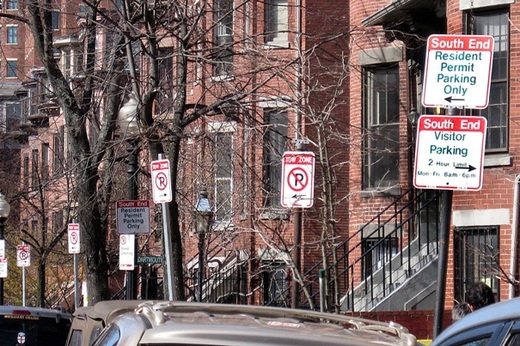The Tech Behind A Tow: The City Of Boston Reunites Cars With Owners Using Twilio Voice
Time to read:

The instant a car gets towed, the clock starts. For every hour the car and the owner are separated, it costs all parties involved money. Police spend their valuable time tracking down the owner. Towing companies take up valuable lot space storing the car while the owner makes dozens of calls to track down their car.
The City of Boston towed 44,787 cars in 2012. When you’re contacting 44,787 car owners, every second counts. In order to cut down on costs, and get residents reunited with their cars faster, the City of Boston implemented proactive towing alerts using Twilio Voice.
Digits, Dialing and Databases
Before the City of Boston digitized their database of thousands of phone numbers, license plates, and addresses, they had a more “hands-on” way of contacting drivers.
In 2010, the city towed 35,014 cars for street cleaning. They had 35,000 car owners to contact and (on average) two pieces of information to use to find the car owner: a license plate number, and an address. This left Boston Police Officers with one costly option, and one time consuming option: They could search for the resident’s phone number themselves, or go visit the address on file. They needed a new approach.
In 2011, the City digitized motor records, resident parking permit contact information, and online renewal contact information, increasing their contact database tremendously.
With a new wealth of information, City needed to decide what avenue of communication they would use to contact drivers. As city webmaster Stayen Shah describes it, the answer was obvious.
“With few exceptions, every vehicle owner has a telephone number,” said Stayen Shah. Stayen used Twilio Voice to build a solution that could place custom voice calls from a web server, so Boston Police could automate tow notifications to car owners and take advantage of their newly improved contact database.
“Email is common, but many users do not continuously monitor their inboxes for new messages, which can result in towing alerts not being seen for hours or days after the tow. Meanwhile, telephone is instantaneous and pervasive,” said Stayen

The Anatomy of A Tow
Satyen’s new Twilio-powered notification system completely changed the way Boston stores and shares data about towed cars.
After Boston Police log the details of a tow in their Computer Assisted Dispatch database (CAD), an automated notification process begins. That data is pushed to a webserver, parsed by SQL, and a T-SQL matches car owner information and creates a call queue. An ASP.NET app takes that queue, sends and XML request to Twilio’s API, and dials all the car owners. The car owners will get a call from a local Boston number relaying all the vital details of their tow: where they were towed from, why, where they can pick up their car, the towing lot’s phone number, and directions.
Towing and Beyond
With the new notification system in place, the City of Boston is spending less than .002% of their revenue from towing on voice alerts and has plans to expand the alert system. This “ creates some exciting possibilities for Boston much larger in scope than towing alerts,” says Satyen. He’s looking to put in place auto-notifications for emergency service teams contacting drivers directly, and allowing law enforcement and neighborhood services to contact citizens if they don’t have their contact information at hand.
Related Posts
Related Resources
Twilio Docs
From APIs to SDKs to sample apps
API reference documentation, SDKs, helper libraries, quickstarts, and tutorials for your language and platform.
Resource Center
The latest ebooks, industry reports, and webinars
Learn from customer engagement experts to improve your own communication.
Ahoy
Twilio's developer community hub
Best practices, code samples, and inspiration to build communications and digital engagement experiences.


